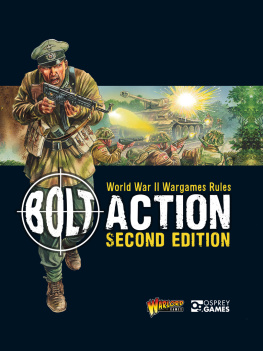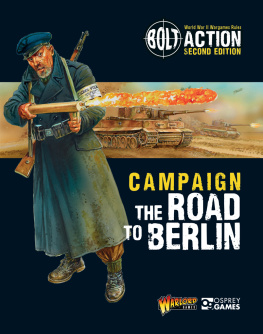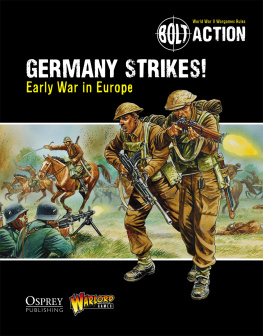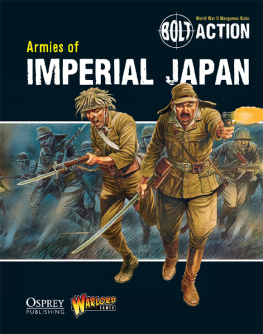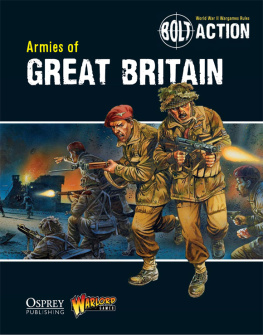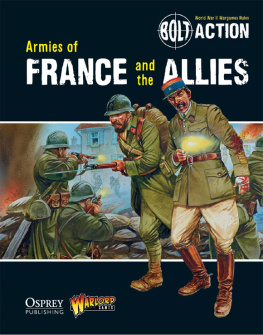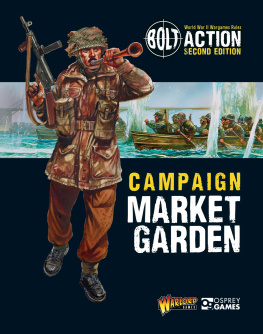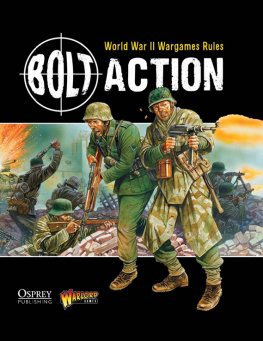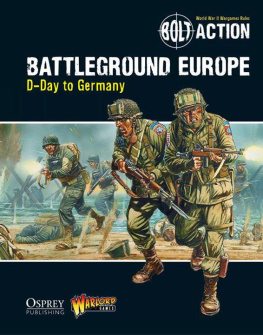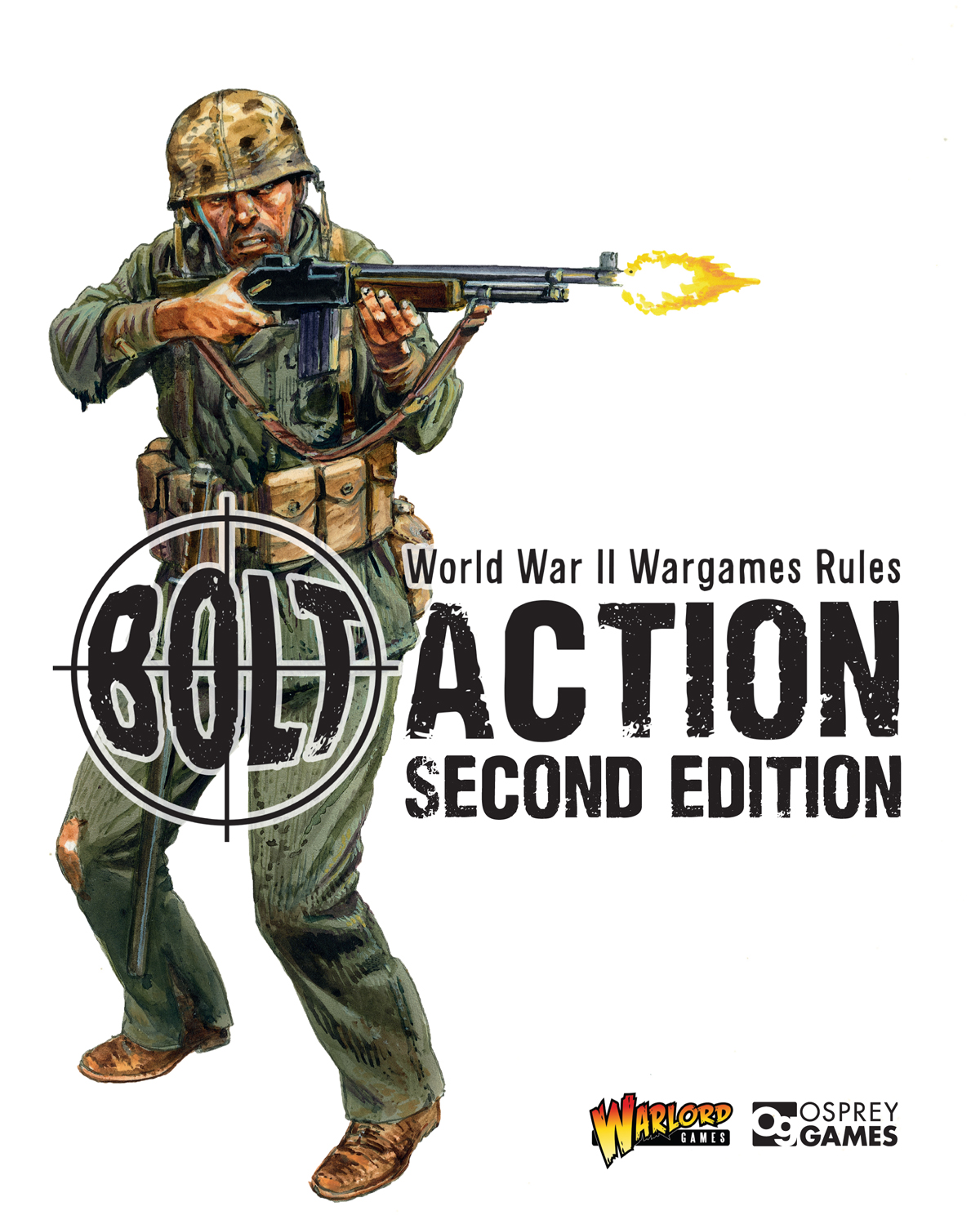
First published in Great Britain in 2016 by Osprey Games (part of Osprey Publishing),
This electronic edition published in 2016 by Bloomsbury Publishing Plc
Bloomsbury is a registered trademark of Bloomsbury Publishing Plc
2016 Osprey Publishing Ltd. and Warlord Games Ltd.
Osprey Publishing
PO Box 883, Oxford, OX1 9PL, UK
1385 Broadway, 5th Floor, New York, NY 10018, USA
E-mail:
Osprey Publishing, part of Bloomsbury Publishing Plc
Warlord Games
T13/T15 Technology Wing, The Howitt Building, Lenton Business Centre, Lenton Boulevard, Nottingham, NG7 2BD, UK
E-mail:
All rights reserved
You may not copy, distribute, transmit, reproduce or otherwise make available this publication (or any part of it) in any form, or by any means (including without limitation electronic, digital, optical, mechanical, photocopying, printing, recording or otherwise), without the prior written permission of the publisher. Any person who does any unauthorised act in relation to this publication may be liable to criminal prosecution and civil claims for damages.
A CIP catalogue record for this book is available from the British Library
ISBN: 978-1-4728-1494-4 (HB)
ISBN: 978-1-4728-1496-8 (eBook)
ISBN: 978-1-4728-1495-1 (ePDF)
www.ospreygames.co.uk
For more information on Bolt Action and other products, please visit
www.warlordgames.com
To find out more about our authors and books visit www.ospreypublishing.com. Here you will find our full range of publications, as well as exclusive online content, details of forthcoming events and the option to sign up for our newsletters. You can also sign up for Osprey membership, which entitles you to a discount on purchases made through the Osprey site and access to our extensive online image archive.
CONTENTS
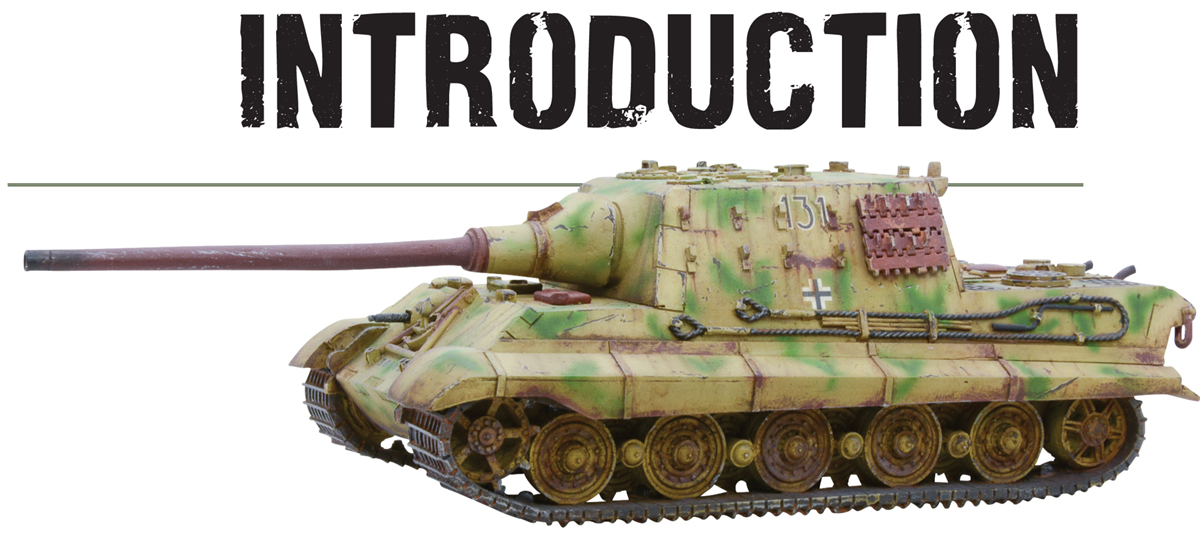
T his book is all about recreating World War II combat on a tabletop using dice, model troops, tanks and the rules described within. Although our game is just that a game of war fought between armies of models it is inspired by the real fighting men, the actual equipment and personal accounts of those who played their part in the historic events portrayed. It is quite a detailed game because we wish our weapons to reflect the capabilities of actual weapons, our models to fight in so far as possible as their flesh-and-blood counterparts fought, and that our players face the same sort of decisions and challenges as did company commanders in action at the time. Even so, our first priority has been to create a game that is entertaining as well as demanding of skill and intelligence, and which is as fair and balanced as it can be, giving both sides an equal opportunity of success. Of course, few real battles were fair and equal in this way, but a game would hardly be worth the playing if victory or defeat were certain, or if one army or nation were to enjoy overwhelming superiority in numbers or materiel. To ensure an equal and balanced game, armies are chosen according to a system of points, allocating a fixed value to fighting units of different types and quality. All the details you need for five armies (American, German, British, Russian and Japanese) are provided in the Army Lists in this book, whilst a series of Bolt Action supplements covers yet more armies and theatres. Tabletop encounters take place according to twelve closely defined battle scenarios that explain how forces are deployed and how victory is achieved. All that remains is for players to pit their wits against each other as they enact just one small part of the greatest conflict in all of history World War II.
Id like to dedicate these rules to the memory of my friend and fellow wargamer Willy Schneider. I wish to thank him for the many armies he painted for me, including the one he could not finish, and for all of the wonderful books and games he left me.
Alessio Cavatore
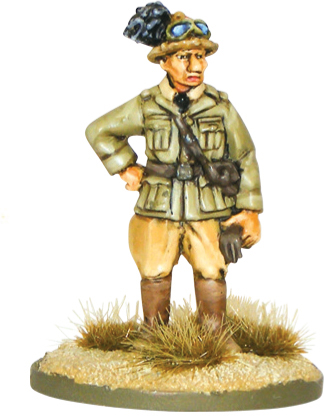

EASTERN AND NORTHERN EUROPE
1939
1 SEPTEMBER THE POLISH CAMPAIGN
German invasion of Poland precipitates declaration of war by Great Britain, France, New Zealand, Australia and Canada. The Russians invade Poland 16 days later. The Poles put up a determined but hopeless fight in the face of overwhelming odds. Poland surrenders within the month and is divided between Germany and Russia.
30 NOVEMBER THE WINTER WAR
The Soviet Union invades Finland but fails to annex the country after remarkable resistance by its defenders. The Finns eventually cede some of their eastern territories bringing the war to an end. Both The Soviet Union and Finland will resume hostilities in 1941.
1940
13 MARCH
Treaty of Moscow ends the Winter War between Russia and Finland.
9 APRIL THE NORWEGIAN CAMPAIGN
Germany invades Denmark and Norway (Operation Weserbung). Danish resistance lasts six hours. It is both the shortest campaign of World War II and also the first to witness the deployment of paratroopers (German Fallschirmjger). The Norwegian fighting sees the first encounter between British and German troops in the defence of Oslo. In the north, a combined force of Norwegian, French and Polish troops defeats the German 3rd Mountain Division at Gratangen, but the Germans gradually force the defenders to withdraw on all fronts. The Norwegians capitulate on 10 June.
27 SEPTEMBER
Germany, Italy and Japan enter into alliance with the signing of the Tripartite Pact. These nations, together with their allies, are generally known as the Axis Powers as opposed to the Allies.
1941
6 APRIL INVASION OF YUGOSLAVIA
German, Italian and Hungarian forces invade Yugoslavia following a military coup against the pro-Axis Yugoslav government. The fighting is one sided and brutal, and the Yugoslav army capitulates 11 days later.
22 JUNE OPERATION BARBAROSSA
The Germans invade Russia aiming to capture Moscow and topple the Soviet government with a single decisive blow. Italy, Romania, Hungary, Slovakia and Finland all declare war on the Soviets. The desperate battles of the following months see the largest deployment of men during the whole war, with over four and a half million Axis troops committed and two and a half million Russians deployed in the west at the start of the invasion (out of over five and a half million available to the Soviet Union at the time). The campaign comes to an end with the successful defence of Moscow by troops under the command of Zhukov. By December Soviet reinforcements arrive from the east and the Russians begin their counter-offensive. The Germans first campaign of the war on the Eastern Front is brought to a halt by the savage Russian winter. Although the German forces are victorious across a wide front the campaign fails to achieve its objective. It is the turning point in the war, although much bitter fighting still lies ahead on the Eastern Front.


